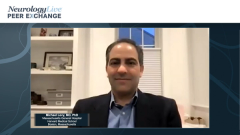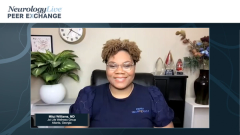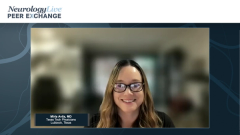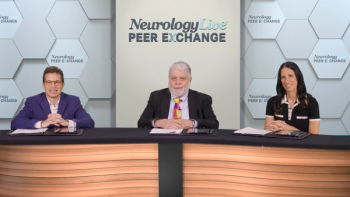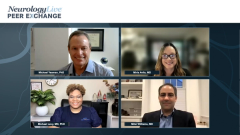
NMOSD Misdiagnosis and Health Outcomes
Dr Michael Levy leads a discussion on negative health outcomes associated with misdiagnosis of NMOSD, the likelihood of disability and relapse, and educating patients about the disease.
Episodes in this series

Michael Yeaman, PhD: This leads to the other way of thinking about diagnosis. In situations where there’s misdiagnosis, what are some of the modifiable or unmodifiable outcomes that can be worsened by poor diagnosis to begin with? Michael, maybe you could pick up where you left off and start us on that question.
Michael Levy, MD, PhD: Are you asking about things like age and race and things that might change their disease course?
Michael Yeaman, PhD: Or if there’s misdiagnosis, what are the long-term negative outcomes that correspond to misdiagnosis?
Michael Levy, MD, PhD: Misdiagnosis has 2 flavors to it. One is misdiagnosis that leads to the wrong treatment, which could actually harm patients. Then there’s misdiagnosis that delays the right treatment. They’re both harmful in some respects. If you put a patient on an MS [multiple sclerosis] therapy that can induce a relapse, you can do a lot of harm. Those patients can have really bad outcomes. Similarly, if you delay treatment, you’re putting a patient at risk of a relapse. But if you put the patient on the right treatment, their outcomes are much better.
Michael Yeaman, PhD: Michael, thank you. Mirla, do you see relationships between misdiagnosis and disability, such loss of vision or mobility, that could be avoided by better, early diagnosis?
Mirla Avila, MD: Yes, a good example is that when I joined the practice in Lubbock, Texas, nobody focused on MS or neuroimmunology. There was a woman who was maybe 45 years old who had the wrong diagnosis of MS and was already in a wheelchair. She had been on different therapies for MS and continued to relapse. When we tested, she was positive for aquaporin-4. That’s the benefit with NMO [neuromyelitis optica], that many patients are positive for aquaporin-4. We don’t have something like that in the MS world, a serology test that can confirm the diagnosis. After we switched her to an NMO medication, she hasn’t relapsed again, but she was having about 1 relapse every year and a half and unfortunately was led to be wheelchair bound.
Michael Yeaman, PhD: Great point, Mirla. Mitzi, maybe you could add to this by talking about not only diagnosis of the initial presentation but also relapse diagnosis and the importance of knowing what is and isn’t a relapse.
Mitzi Williams, MD: Absolutely. Certainly, it’s important to educate our patients about what a relapse looks like, what potential symptoms could occur, and when to ring the alarm and give us a call. As we discussed, sometimes the symptoms with NMOSD [neuromyelitis optica spectrum disorder] relapses can be dramatic so they may be more likely to call us vs with an MS relapse where symptoms may be milder. It’s extremely important for people to be aware of those symptoms, whether it’s visual loss, paresthesias, numbness and tingling in extremities, or weakness. It’s important that they’re aware and know that we need to address those relapses as quickly as possible. We also address treatment at each visit so that if they’re having relapses in between their visits for whatever reason, we look at their disease-modifying therapy and make sure that we adjust that accordingly now that we have options to adjust their treatments.
Michael Yeaman, PhD: Great. Thanks so much. That’s a lot of great information.
Transcript Edited for Clarity
Newsletter
Keep your finger on the pulse of neurology—subscribe to NeurologyLive for expert interviews, new data, and breakthrough treatment updates.

